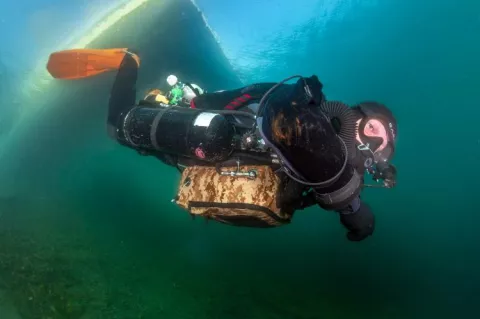Ghost Net Recovery in the Baltic Sea
It is estimated that hundreds of thousands of tons of ghost nets lie at the bottom of the Baltic Sea, often caught on shipwrecks, many of which are historical in significance. The Baltic Sea Heritage Rescue Project brings together volunteers from all over the world with the drive to locate, document and remove such ghost nets from wrecks in the Baltic Sea, thus saving marine life, protecting the wrecks and keeping their stories alive.















